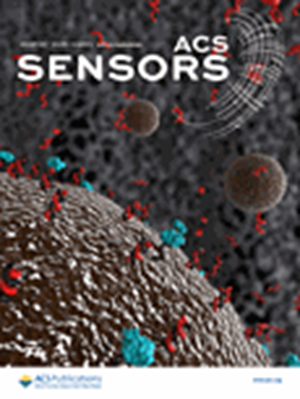植物离子监测用微针传感器。离智能农业更近一步。
IF 8.2
1区 化学
Q1 CHEMISTRY, ANALYTICAL
引用次数: 0
摘要
随着全球粮食需求的增长和农业系统面临环境挑战带来的前所未有的压力,了解离子(即关键营养成分)在作物生产力中的作用从未像现在这样重要。不幸的是,目前的植物离子分析工具依赖于破坏性的汁液收集,无法捕捉到离子浓度的动态变化。另一方面,由于依赖昂贵的设备和复杂的操作程序,非侵入性光学方法在现场应用中缺乏实用性。微针(MN)传感技术的最新进展表明,通过直接检测各种重要的生物标志物(包括但不限于离子),微针(MN)传感技术在实时监测植物健康方面具有巨大潜力。通过提供微创方法,MN传感器允许连续的植物内监测,精确渗透到植物组织中,确保自然生长不受干扰。然而,MN传感器的应用,特别是在体内离子测量方面,还处于非常早期的阶段。在此,我们深入研究了植物MN传感器的技术潜力和应用途径,重点是定制传感器设计,以满足各种植物生长环境和离子检测分析性能的特定要求。本文还介绍了植物中离子水平的基本相关性,对现有离子检测方法进行了全面评估,并确定了与实现有效植物监测相关的关键挑战。值得注意的是,我们强调了MN传感器作为揭示植物胁迫反应、优化作物产量以及在精准农业和植物科学研究领域发挥不同作用的变革性方法的潜力。本文章由计算机程序翻译,如有差异,请以英文原文为准。
Microneedle Sensors for Ion Monitoring in Plants. One Step Closer to Smart Agriculture.
As global demand for food rises and agricultural systems face unprecedented stress from environmental challenges, understanding the role of ions (i.e., key nutrient components) in crop productivity has never been more critical. Unfortunately, current tools for ion analysis in plants rely on destructive sap collection that fails to capture the dynamic changes in ionic concentrations. On the other hand, noninvasive optical methods lack practicality for field applications due to their reliance on expensive equipment and complex operational procedures. Recent advancements in microneedle (MN) sensing technology have demonstrated significant potential for real-time monitoring of plants' health by enabling the direct detection of various important biomarkers, including but not limited to ions. By offering a minimally invasive approach, MN sensors allow continuous in-planta monitoring with precise penetration into plant tissues, ensuring natural growth remains undisturbed. However, the application of MN sensors, especially for in vivo ion measurement, is still in its very early stage. Herein, we delve into the technological potential and application avenues of plant MN sensors, with a focus on tailoring sensor designs to meet the specific requirements of various plant growth environments and analytical performances for ion detection. This perspective paper also introduces the essential relevance of ion levels in plants, provides a comprehensive assessment of existing ion detection methods, and identifies key challenges associated with achieving effective in planta monitoring. Notably, we highlight the potential of MN sensors as a transformative approach for unveiling plant stress responses, optimizing crop yields, and fulfilling diverse roles that bridge the fields of precision agriculture and plant science research.
求助全文
通过发布文献求助,成功后即可免费获取论文全文。
去求助
来源期刊

ACS Sensors
Chemical Engineering-Bioengineering
CiteScore
14.50
自引率
3.40%
发文量
372
期刊介绍:
ACS Sensors is a peer-reviewed research journal that focuses on the dissemination of new and original knowledge in the field of sensor science, particularly those that selectively sense chemical or biological species or processes. The journal covers a broad range of topics, including but not limited to biosensors, chemical sensors, gas sensors, intracellular sensors, single molecule sensors, cell chips, and microfluidic devices. It aims to publish articles that address conceptual advances in sensing technology applicable to various types of analytes or application papers that report on the use of existing sensing concepts in new ways or for new analytes.
 求助内容:
求助内容: 应助结果提醒方式:
应助结果提醒方式:


